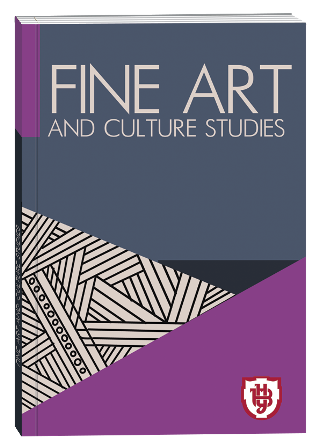THE STYLE OF SECESSION IN WESTERN UKRAINIAN MUSIC CULTURE OF THE EARLY TWENTIETH CENTURY
DOI:
https://doi.org/10.32782/facs-2022-1-22Keywords:
Secession, fin de siècle, western Ukrainian music, S. Lyudkevych, V. BarvinskyAbstract
The article considers the peculiarities of the manifestation of the Secession style in the Ukrainian musical culture of the early twentieth century. It is noted that secession, as a phenomenon of pre-modernism, had the greatest development in painting and architecture, and its centers in the Austro-Hungarian Empire were Vienna and Prague. Attempts to get closer to new trends and directions of art were also characteristic of the generation of Western Ukrainian composers, whose creative activity began in the first two decades of the twentieth century. It is claimed that, in contrast to the Austro- German, Polish or Russian versions, secession in the Ukrainian musical culture is associated with the active search for national style and the formation of a compositional school of European standard. The purpose of the proposed article is to consider the characteristics of the Secession style in the works of two of the most prominent representatives of Western Ukrainian musical culture of the first half of the twentieth century. - S. Lyudkevych and V. Barvinsky, as evidence of the maturity of Ukrainian musical art of the early twentieth century. and its inclusion in the pan-European cultural context. The methodology of the article is based on the use of the musicological historical approach in the study of historical patterns of development of Western Ukrainian professional music culture; comparative method, which reveals the individual features of the work of S. Lyudkevych and V. Barvinsky; semiological, as a tool for interpreting musical texts. The scientific novelty of the article is to identify the dichotomy of secession in Ukrainian musical art on the European and national trends. Conclusions. The influence of the Viennese secession with its aesthetic component gives grounds to speak of the return of Ukrainian culture to its dominant aesthetic component, lost in the previous stage of development. S. Lyudkevych and V. Barvinsky made a breakthrough in the then Ukrainian musical consciousness, demonstrating in their early works distinct modern thinking.
References
Грималюк Р. Формування естетичної платформи сецесії в українському мистецтв кінця ХІХ – початку ХX ст. Народознавчі зошити. Серія мистецтвознавча, 2014. № 6 (120). С.1316–1327.
Захаржевська В. Сецесія в художньому світі слов'ян (українсько-болгарські ремінісценції). Слово і Час. Київ : Фенікс, 2008. № 5. С. 20-24.
Зінків І. Коломийка у творчості Василя Барвінського. Українське мистецтвознавство: матеріали, дослідження, рецензії. Київ: НАНУ, ІМФЕ ім. М. Т. Рильського, 2009. Вип. 9. С. 99–106.
Каралюс М. Стильові домінанти модерну в українському мистецтві. Студії мистецтвознавчі, 2010. № 3. С. 64-69.
Назар Л. Спостереження над стилем В. Барвінського. Первні творчої особистості як культурологічного феномену: аутентичний первень. Василь Барвінський у дослідженнях та матеріалах / ред. В. Грабовський. Дрогобич: Посвіт, 2008. С.16–45.
Немец-Игнашева Д. Fin de siècle, Антропология переломных эпох:https://discours.philol.msu.ru/archives/309 (дата звернення: 25.10.2021).
Новакович М. Галицька музика габсбурзької доби: у пошуках української ідентичності. Львів: Видавець Т. Тетюк, 2019. 368 с.
Павлишин С. Василь Барвінський. Київ : Муз. Україна, 1990. 87 с.
Степняк М. Поети «Молодої музи». «Чорна Індія» «Молодої Музи»: антологія прози та есеїстики / Упоряд., літ. ред. та прим. В. Ґабора. Львів: ЛА «Піраміда», 2014. С. 236–279.
Тарнавський О. Поет Василь Пачовський. Пачовський В. Зібрані твори: у 2 т. Філадельфія–Нью-Йорк–Торонто: Слово, 1984–1985. Т. 1: Поезії. 1984. С. 11–26.







